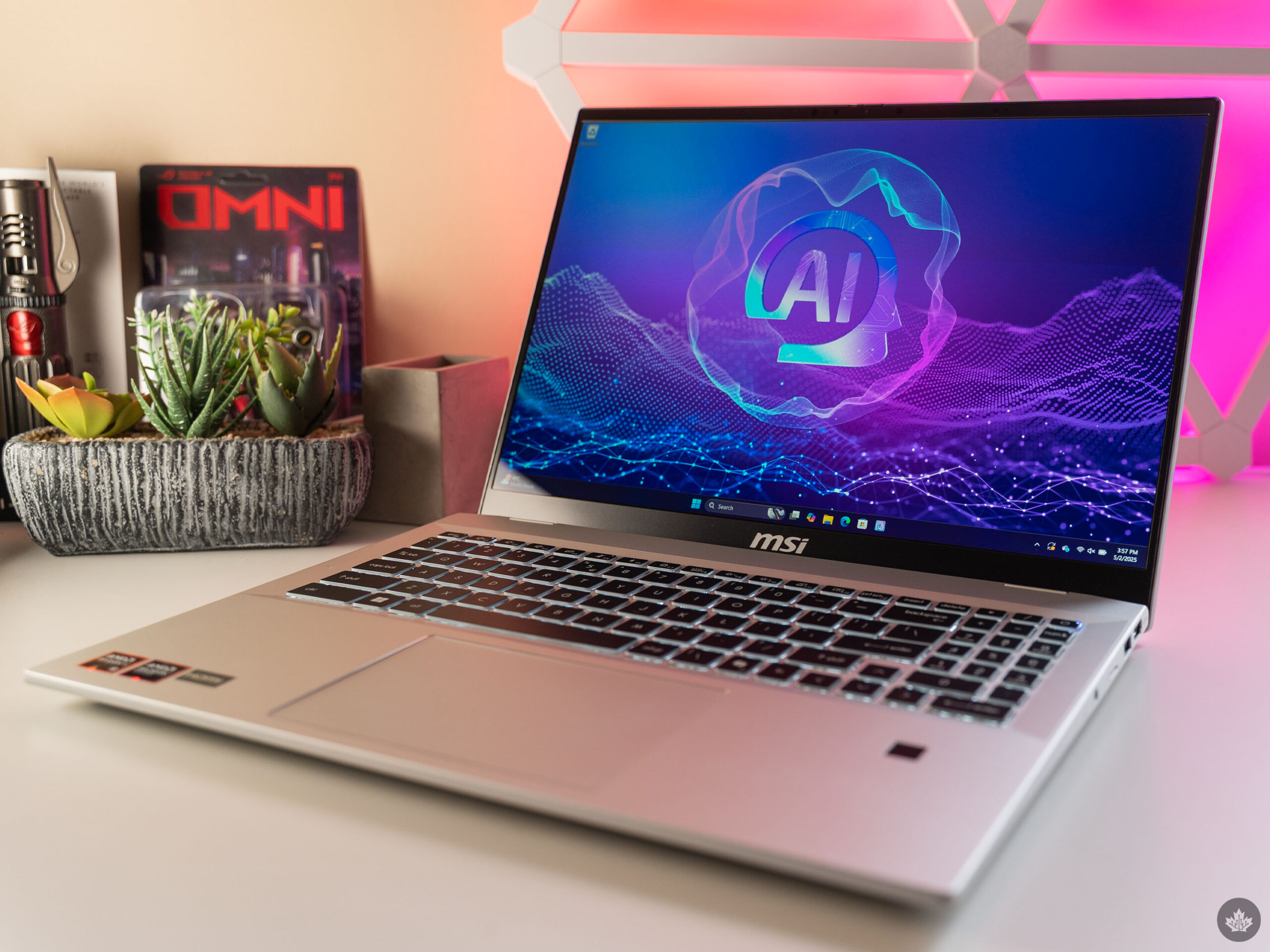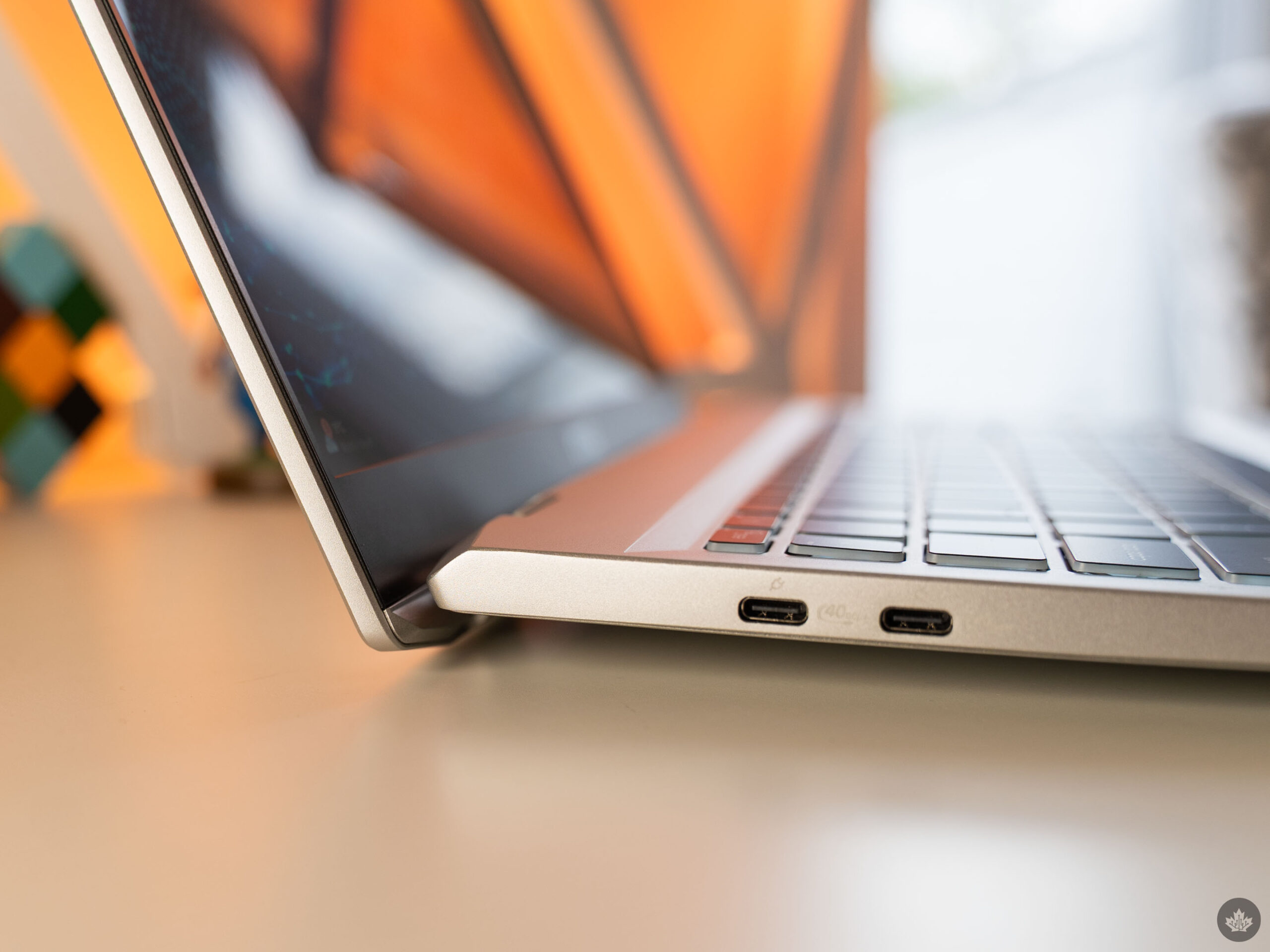In recent years, Intel has gotten a bit of a bad rep in the PC space. The company lagged behind competitors and faced leadership issues, leading some to sour feelings toward the company. But while competing chips from AMD and Qualcomm impress, Intel continues to proclaim leadership in the space.
From my own testing experience with Windows laptops, I see both sides. Intel absolutely remains a powerhouse, but its chips are no longer the default best option. Anecdotally, Qualcomm’s Snapdragon X chips have really impressed me with their power and efficiency. Sure, they might not beat Intel in head-to-head performance, but I’m happy to trade some performance for the significantly better battery life. Similarly, I’ve been impressed with the performance of recent AMD chips and increasingly see the company as a strong alternative to Intel.
So, when Intel asked me to test two MSI Prestige laptops, one sporting Intel’s Core Ultra 285H and the other with AMD’s Ryzen AI 9 365, I was intrigued. Having now put both laptops head-to-head, I do think I have to give the edge to the Intel MSI Prestige variant for a few reasons, though that doesn’t mean you shouldn’t buy the AMD one.
Specs – MSI Prestige 16 AI Evo B2HMG (Intel)
- Display: 2560×1600 60Hz
- Processor: Intel Core Ultra 9 285H
- Memory: 32GB RAM
- Storage: 1TB
- Dimensions: 358.4 x 254.4 x 16.85-18.95 mm
- Weight: 1.5kg
- Camera: 1080p HDR webcam
- Operating System: Windows 11
- Battery: 99.9Wh
- Connectivity: Wi-Fi 7, Bluetooth 5.4
- Sensors: Fingerprint sensor
- Ports: 2x Thunderbolt 4, 1x USB 3.2 Gen 2 Type A, 1x HDMI 2.1, 1x SD card, 1x ethernet, 1x 3.5mm audio
- Graphics: Intel Arc 140T
Full spec list available on the MSI website.
Specs – MSI Prestige A16 AI+ A3HMG (AMD)
- Display: 2560×1600 165Hz
- Processor: AMD Ryzen AI 9 365
- Memory: 32GB
- Storage: 1TB
- Dimensions: 358 x 258.55 x 16.9 -17.35 mm
- Weight: 1.9kg
- Camera: 1080p HDR webcam
- Operating System: Windows 11
- Battery: 82Wh
- Connectivity: Wi-Fi 7, Bluetooth 5.4
- Sensors: Fingerprint sensor
- Ports: 2x Thunderbolt 4, 1x USB 3.2 Gen 2 Type A, 1x HDMI 2.1, 1x SD card, 1x ethernet, 1x 3.5mm audio
- Graphics: AMD Radeon 880M
Full spec list available on the MSI website.
Similar inside, wildly different outside
MSI Prestige 16 AI Evo B2HMG with Intel chip.
As you can see from the above specs, aside from the CPU, GPU, and a few other things, the two Prestige laptops are nearly identical on the inside. Externally, however, there are some notable differences. The most obvious is the colour, with the Intel variant shipping in ‘Stellar Gray’ and AMD in ‘Urban Silver.’ Both colours are equally boring to my eyes.
Beyond the colour, things get a little more interesting. The Intel variant is quite a bit lighter at 1.5kg to the AMD version’s 1.9kg. It might not seem like a lot, but it is absolutely noticeable when you pick up these laptops. Anyone who values portability will likely want to rock the Intel version just because it’s much easier to carry around.
Other notable differences include the port placement. I prefer the AMD version here, with the Thunderbolt ports on the left and everything else on the right. The side-mounted ports are far more accessible than the rear-mounted ports on the Intel version. However, rear ports are nice if you use your laptop docked at a desk often, as it helps keep the cables tidy and out of the way.

MSI Prestige A16 AI+ A3HMG with AMD chip.
The Intel variant’s fans blow out the left side and rear, while the AMD fans exhaust near the bottom of the display. It’s an odd layout but allows for the laptop screen to extend down when open, propping up the chassis on a bit of an angle for better airflow through the bottom vents. It’s a nice touch, but in my experience with the two, very needed on the AMD version, which consistently felt warmer under load than the Intel version did.
Finally, when it comes to input, I slightly preferred the AMD keyboard to the Intel one, though I didn’t particularly like either. The Intel version felt mushy, which made it more unpleasant to use. Things swap with the trackpad – the Intel Prestige sports a larger, more tactile trackpad that felt great to use, while the AMD Prestige’s trackpad felt hollow and cheap.
Intel takes the edge in performance

Overall, I’m not a huge fan of the design of either laptop, but I think the Intel Prestige is a tad nicer. But that’s not really why you’re here – you want to know how these two perform. In my testing, Intel also took the edge here. I mostly focused on benchmarks since those provide comparable numbers. That said, benchmark tests don’t always tell the whole story, so I’ll mention that in just using the two laptops, the Intel one felt slightly snappier in some tasks.
For example, there was no notable difference when browsing the internet, downloading apps, and performing other general, day-to-day tasks. However, in some more intensive tasks, I definitely noticed a difference. Installing apps and unzipping files were noticeably quicker on the Intel version – in one case, where I started unzipping a 1.3GB file on both laptops at the same time, the AMD version took an extra two minutes and 23 seconds to complete the task.
In benchmark tests, the Intel-equipped MSI Prestige consistently beat out the AMD variant, though in some cases the numbers were really close.
One area where results were more mixed was AI performance. When I tested the laptops using Geekbench AI with the ONNX framework and the DirectML backend, the AMD-equipped Prestige outperformed the Intel one. But when I ran the same test using the OpenVINO framework instead, Intel scored better than AMD.
I also ran the Geekbench AI tests using the CPU as the backend. Intel was the champ here on both ONNX and OpenVINO tests. So overall, I think I have to give AI performance to Intel as well, even though AMD scored a few wins here.
With great power…

While Intel held the edge in performance, the results were close enough that I wasn’t feeling strongly one way or another. Then I tested the battery life.
Typically, when I review laptops, I build a sense of how long the battery lasts over a few weeks of daily use, but for a direct comparison like this, I wanted a more concrete, repeatable test. So I set up both laptops with the same 10-hour nature video streaming at 1440p, set both screens to max brightness, hit play and unplugged them at the same time. Both laptops started at 94 per cent charge.
After an hour of streaming the video, the Intel laptop dropped to 85 per cent, while AMD fell to 75 per cent. Once the second hour had passed, Intel was at 76 per cent while AMD was at 58. By three hours, Intel had dropped to 66 per cent and AMD to 42. I stopped the test at the four-hour mark with Intel at 56 per cent charge and AMD at 28 per cent.

Now, it’s worth pointing out that the Prestige laptop sporting the AMD chip does have a smaller 82Wh battery compared to the 99.9Wh cell in the Intel version, so that’s absolutely a factor here. But how quickly the AMD Prestige drained seemed surprising, and after digging around, I noted that other testers found the battery drain to be higher than it should be compared to other AMD systems. So it likely isn’t entirely fair to compare the battery performance here if there’s something funky going on with the AMD chip.
Still, I have to give kudos to Intel for the notable power efficiency on display. I still don’t think that Intel is the best option for people who want long battery life – aside from the Dell XPS 13 I tested, no Intel laptop has come anywhere close to the multi-day battery life I’ve enjoyed from the Snadragon X chips. However, Intel is definitely making progress, which must be commended.
Final verdict

Typically, this is where I’d dive into a pricing analysis, but at the time of writing, I had a tough time finding either MSI Prestige laptop in Canada. MSI Canada’s website only lists older models of these laptops. I was able to find some configurations of the AMD-equipped Prestige at Staples and Canada Computers, but neither had the variant that I tested. And without comparable Intel pricing, I can’t offer a price analysis. I did reach out to my Intel contact to learn more about Canadian pricing and availability for both models and will update this section accordingly.
What I can offer is a recommendation of which of these two laptops to go for. Based on the numbers and the apparent battery issues with the AMD variant, the Intel-equipped Prestige is the way to go (if you can find it). However, while Intel impressed me in this head-to-head comparison, I’m still not entirely convinced its chips are the default best option again – frankly, there isn’t a single ‘best option’ anymore.
Instead, I think it makes more sense for customers to buy based on the strengths of chips. For example, Qualcomm chips are a great option for people concerned about battery life, while Intel chips remain a top choice for performance. And while this wasn’t the case with the AMD-powered Prestige laptop I tested, generally, AMD chips land somewhere in the middle.
Intel has absolutely made improvements, and it’s clear competition in the chip space is really heating up. But I’m still waiting for something that can match or beat Qualcomm’s battery life in ultra thin-and-light PCs.
MobileSyrup may earn a commission from purchases made via our links, which helps fund the journalism we provide free on our website. These links do not influence our editorial content. Support us here.
